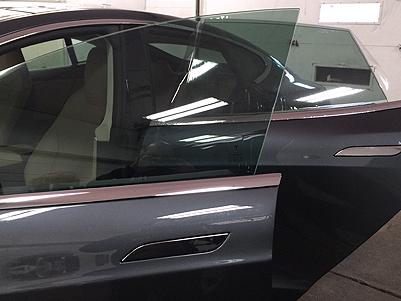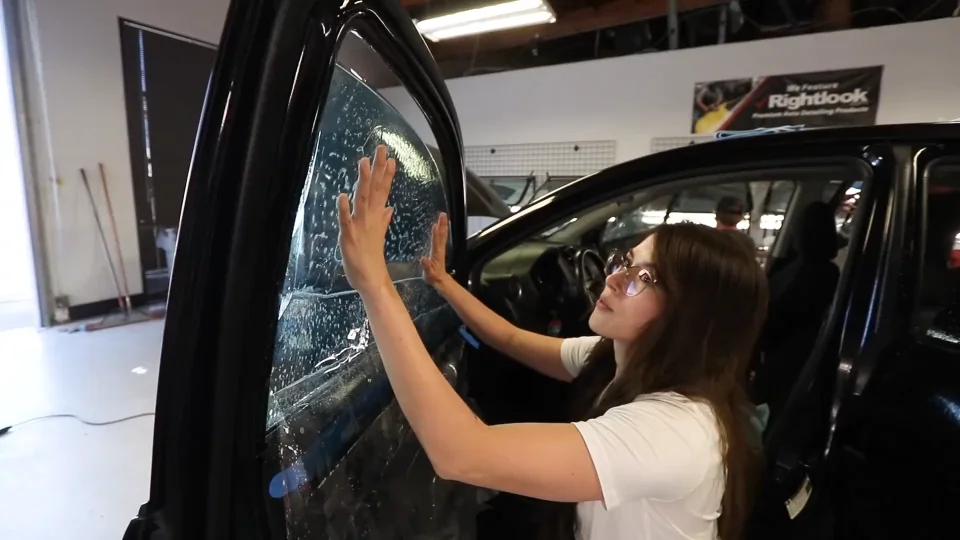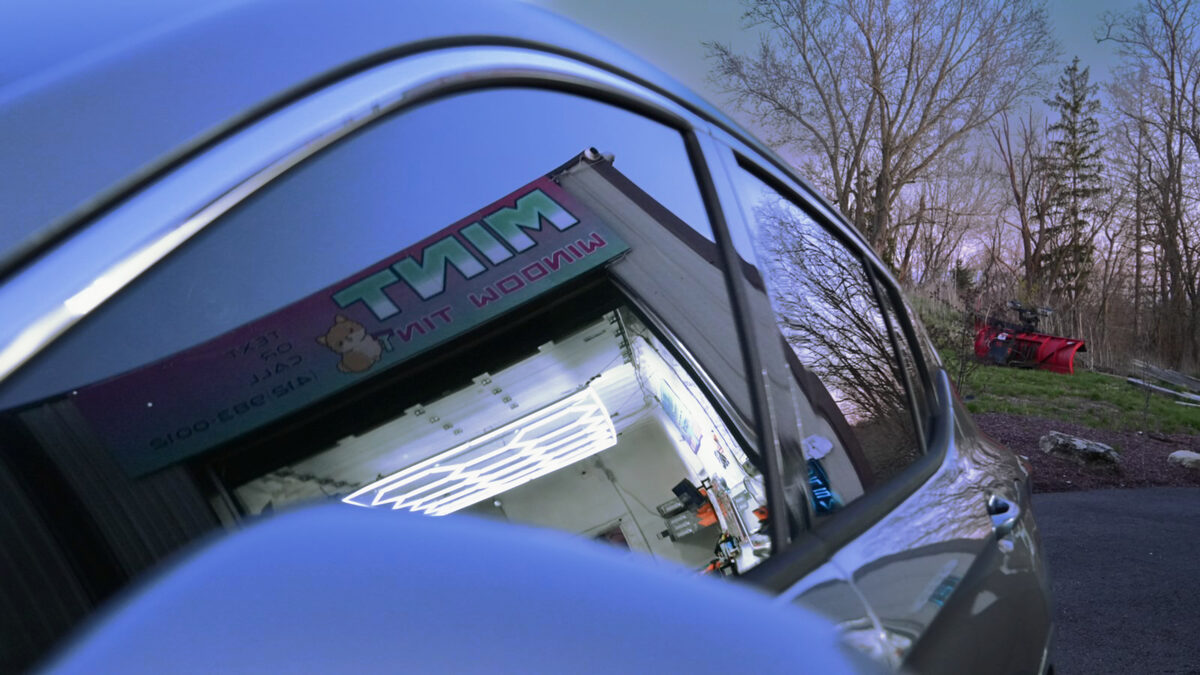A Comprehensive Guide to Comprehending Vehicle Home Window Color and Its Advantages
Auto home window tinting offers more than just an aesthetic function for lorries. It uses different kinds, each with distinct features and advantages. Comprehending these alternatives, together with legal policies and maintenance tips, is vital for any kind of automobile owner. The advantages might substantially boost driving comfort and automobile long life. As one checks out the nuances of window tinting, the question emerges: what sort of tint is best suited for individual demands?
Understanding Auto Home Window Tint: What It Is and Just how It Works
Automobile window color functions as a protective barrier that enhances vehicle visual appeals while offering practical advantages. This thin film is applied to the interior surface area of auto windows, decreasing glare and obstructing damaging ultraviolet (UV) rays from the sunlight. By filtering sunshine, vehicle window color helps to manage the interior temperature of the automobile, leading to enhanced comfort for guests and lowered reliance on air conditioning.Additionally, it secures the lorry's inside from fading, protecting both furniture and control panel materials. The color can additionally improve privacy, making it harder for outsiders to see inside the vehicle. Certain types of home window color can increase safety; in the occasion of a crash, the film helps hold shattered glass with each other, minimizing the danger of injury from flying shards. In general, vehicle home window color serves both visual and useful purposes, making it a popular choice among automobile proprietors.
Sorts Of Home Window Tint: An Introduction of Options
When taking into consideration window color choices, numerous kinds are available, each with unique characteristics. Dyed, metalized, and ceramic home window tints offer varying levels of warmth rejection, UV defense, and aesthetic appeal. Comprehending these differences can help vehicle owners make informed selections based upon their choices and demands.
Dyed Home Window Color
Colored home window color represents a preferred selection amongst automobile owners seeking a efficient and economical way to boost their lorry's appearances and privacy. This kind of tint is developed by positioning a layer of color in between a safety covering and a glue layer, causing a darkened look that reduces glare and enhances aesthetic convenience. While dyed window color effectively blocks dangerous UV rays, it may not offer the same level of heat rejection as other tint kinds. In addition, its color can discolor with time, possibly diminishing its effectiveness. Regardless of these downsides, colored home window color remains preferred for its cost-effectiveness and capacity to supply a streamlined, trendy seek to different car designs.
Metalized Window Tint
Metalized window color offers a balance of style and functionality, making it a preferred option amongst vehicle proprietors. This kind of tint incorporates metal fragments within the movie, improving both aesthetic charm and warmth being rejected. The reflective quality of metalized color assists to decrease glare and improve personal privacy, while also supplying UV defense, which safeguards the car's interior. Furthermore, metalized window color can reinforce home window toughness, possibly protecting against shattering during mishaps. It is vital to keep in mind that the metallic elements can interfere with digital signals, such as GPS and cell phone function. Generally, metalized window color gives an efficient remedy for those seeking a combination of toughness, sunlight, and look defense for their cars.
Ceramic Window Tint
Ceramic window color represents a sophisticated option in the spectrum of auto home window movies, supplying distinct benefits over conventional tints. Unlike dyed or metalized movies, ceramic tints use sophisticated ceramic bits, which efficiently turn down heat and UV rays without jeopardizing visibility. This innovation ensures that automobiles remain cooler, minimizing dependence on air conditioning and enhancing gas effectiveness. Furthermore, ceramic window tints are less likely to disrupt electronic tools, such as GPS or mobile signals, making them a practical choice for modern vehicles. In addition, their toughness and scratch resistance add to a much longer life expectancy compared to other kinds of tints. Overall, ceramic window tint offers premium efficiency, convenience, and security, making it a recommended choice for critical lorry owners.
Benefits of Car Home Window Color: Beyond Looks
While many people associate automobile home window color with enhanced style, its advantages expand far beyond plain visual appeals. One substantial advantage is heat reduction; home window color can block up to 99% of dangerous UV rays, protecting and maintaining the interior colder furniture from fading. This not just enhances comfort throughout hot weather however also minimizes reliance on cooling, bring about improved fuel efficiency.In enhancement, auto window color offers an included layer of privacy and security. Tinted home windows make it difficult for outsiders to see inside the car, which can prevent burglary and shield prized possessions. In addition, many colors strengthen the glass, decreasing the likelihood of ruining in the occasion of a mishap, thus enhancing safety.In enhancement to these useful benefits, auto window color can likewise contribute to glare decrease, enhancing presence for chauffeurs and passengers alike. This multifaceted approach to comfort and safety and security makes window tint an important investment for car proprietors.
Lawful Factors To Consider: Tinting Regulations by State
Prior to dedicating to vehicle home window color, vehicle proprietors should navigate an intricate landscape of tinting policies that differ by state. Each state has particular regulations regulating the allowable degrees of color darkness and reflectivity for different windows, consisting of windscreens, front side windows, and back windows. These guidelines commonly consist of noticeable light transmission (VLT) percentages, which determine just how much light can pass via the colored glass.Some states permit darker tints on back home windows while restricting front side and windshield tints for safety and security reasons. Furthermore, certain states might require a certificate from the supplier to confirm conformity with tinting laws. Breaching these regulations can lead to fines, discover this necessary elimination of the tint, or both. It is important for vehicle proprietors to research their state's laws thoroughly to ensure lawful conformity prior to mounting home window color. This diligence can conserve money and time in the future.
Picking the Right Color: Factors to Consider
When choosing the suitable window tint for an automobile, numerous critical elements come right into play. Color darkness levels, UV defense rankings, and conformity with legal laws are important considerations to guarantee both visual appeals and capability - Car Glass Tinting. Assessing these facets will help people make an informed decision that fulfills their demands and sticks to regional legislations
Color Darkness Levels
Choosing the proper color darkness degree is vital for accomplishing the desired equilibrium between visual appeals and performance in auto home window tinting. Different states have varying legal laws pertaining to tint darkness, which can impact the option. Usually, colors are measured in percents, with reduced percentages suggesting darker shades. Darker colors supply raised personal privacy and a sleek look however can minimize exposure, especially during the night. Conversely, lighter tints maintain a more open feel, making sure ample presence while still giving some warmth and glow decrease. Individuals must consider their driving practices, regional laws, and individual choices when deciding. Eventually, the appropriate tint darkness degree enhances the automobile's appearance while guaranteeing security and conformity with legal requirements.
UV Defense Ranking
Tint darkness degrees play a significant function in the general performance of car home window tinting, yet one more important aspect to review is the UV security rating of the selected color. This rating shows the percent of hazardous ultraviolet rays that the tint can block. High-grade colors commonly provide 99% or even more UV defense, safeguarding passengers and the car's inside from sun damage. Prolonged exposure to UV rays can result in skin troubles and fading of upholstery, making a high UV protection rating essential for wellness and long life. When choosing home window color, customers need to prioritize this ranking together with darkness degrees to guarantee maximum convenience and security while driving. Recognizing these elements aids in making an informed choice when purchasing car window tinting.
Legal Regulations Compliance
Understanding regional lawful laws is vital for anyone considering auto home window tinting. Each state or region has particular laws governing the allowable degrees of color darkness and reflectivity for various home windows. These laws typically define the visible light transmission percentage, determining just how much light can go through the tinted glass. Non-compliance can lead to penalties, obligatory removal of the tint, or concerns during vehicle inspections. Additionally, some areas may have restrictions on using certain tinting products, needing consumers to pick products that meet safety and security criteria. It is vital for automobile owners to investigate their regional laws completely prior to choosing window color to guarantee conformity and avoid possible lawful problems.
Installation Refine: DIY vs. Expert Providers
How does one choose in between a DIY setup and working with professional solutions for automobile home window tinting? The choice often rests on spending plan, experience, and desired results. A do it yourself technique can be economical, enabling individuals to minimize labor expenses. It needs a specific degree of ability and knowledge regarding the tinting process. Those who are thorough and person may find success with DIY packages available in the market.Conversely, professional solutions supply experience click here for more and top quality materials, making certain a perfect coating. Specialists often guarantee their work, offering satisfaction against potential issues such as peeling off or gurgling. Furthermore, they recognize with regional laws regarding tinting, which can be complex for the average vehicle owner.Ultimately, the choice mirrors an equilibrium in between expense, personal capability, and the expected top quality of the tinting work. Each choice has its advantages, and the very best selection depends upon private situations and preferences.
Upkeep Tips: Keeping Your Tint in Leading Condition
Maintaining the look and capability of window tint requires normal interest and care, especially in differing weather. To protect the color, it is vital to prevent utilizing unpleasant cleansing materials, which can damage the film or damage. Car Glass click to read more Tinting. Rather, soft microfiber cloths and mild, ammonia-free cleansers need to be used for cleaning up the colored surfaces.Furthermore, it is advisable to wait at the very least thirty days after installment before cleansing the home windows to enable the color to completely stick. Car park in shaded locations or using sunshades can help minimize the fading impacts of UV rays and lengthen the tint's life-span. Regular inspections for bubbles, peeling off, or discoloration are advised, as very early discovery can promote repairs. Finally, avoiding extreme temperature fluctuations, such as pressing hot home windows in cold climate, will certainly help preserve the color's integrity and appearance gradually
Regularly Asked Questions

How Lengthy Does Home Window Tint Typically Last on an Automobile?
Window color generally lasts in between five to 10 years, depending on factors such as quality, application, and ecological conditions. Routine upkeep and appropriate care can extend its lifespan, guaranteeing excellent efficiency and appearance with time.
Can Window Tinting Damage My Automobile's Original Glass?
Window tinting, when used appropriately, does not damage an auto's initial glass. Inappropriate setup or low-grade materials might lead to problems like bubbling or peeling, possibly impacting the glass's integrity over time.
Is Home Window Tinting Safe for All Kinds Of Autos?

Will Home Window Tinting Gap My Vehicle Service Warranty?
The concern of whether window tinting gaps an automobile warranty commonly depends on the supplier's plans. Usually, if the color does not damage the lorry, service warranties commonly continue to be undamaged. Nevertheless, getting in touch with the dealer is advisable.

Can I Remove Window Tint Myself if Needed?
Eliminating window color oneself is feasible, however it requires cautious interest to stay clear of harming the glass. Individuals must make use of ideal tools and methods to ensure an effective removal without leaving glue deposit or scrapes behind. While dyed home window color properly blocks harmful UV rays, it may not provide the same degree of heat being rejected as other color kinds. Ceramic window tint represents an advanced choice in the range of automobile home window films, using distinct benefits over typical colors. Prior to dedicating to auto window color, lorry proprietors need to navigate an intricate landscape of tinting laws that vary by state. These guidelines often include visible light transmission (VLT) percents, which dictate just how much light can pass with the tinted glass.Some states allow darker colors on rear windows while restricting front side and windscreen tints for safety factors. Color darkness degrees play a significant function in the general efficiency of automobile home window tinting, but another important aspect to review is the UV defense ranking of the selected tint.